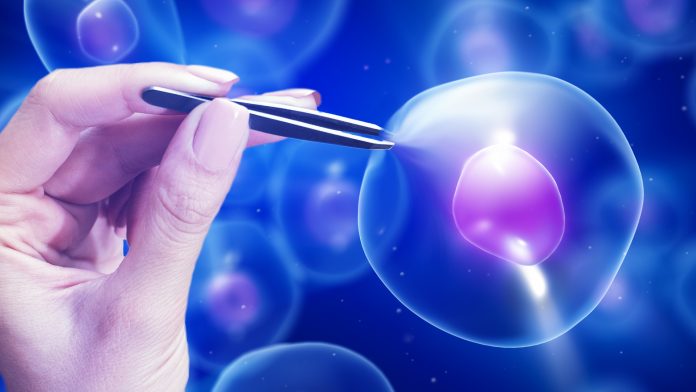Researchers at University of Leeds have developed ‘nano-tweezers’ which can extract single molecules from living cells without destroying them.
Dr Paolo Actis, from the School of Electronic and Electrical Engineering at the University of Leeds, played a key role in this research programme, collaborating with senior chemistry professors at Imperial College London on the interdisciplinary challenge of developing nano-tweezers.
Dr Actis has just received €4m from the European Union’s Horizon 2020 to the SENTINEL project. SENTINEL will train academic and industry researchers to apply this type of ‘nanoelectrochemistry’.
These nano-tweezers are formed from a sharp glass rod terminating with a pair of electrodes made from a carbon-based material, similar to graphite. The tip is less than 50 nanometres in diameter and is split into two electrodes, with a 10 to 20-nanometre gap between them. A nanometre is one-millionth of a millimetre.
By applying an alternating voltage, this small gap creates a powerful highly localised electrical field that can trap and extract the small contents of cells such as DNA and transcription factors – molecules that can change the activity of genes.
“Traditional methods for studying these differences typically involve bursting the cell”
Dr Actis said: “We are continuously expanding our knowledge on how cells function, but many unanswered questions remain. This is especially true for individual cells that are of the same type, such as brain, muscle or fat cells, but have very different compositions at the single-molecule level.
“Cataloguing the diversity of seemingly identical cells can help researchers to better understand fundamental cellular processes and design improved models of disease, and even new patient-specific therapies.
“However, traditional methods for studying these differences typically involve bursting the cell, resulting in all of its contents getting mixed. This results in the loss of spatial information – how the contents were laid out in relation to each other, and dynamic information, such as molecular changes in the cell over time.
“The development of these nanoscale tweezers therefore solves a major problem and could help scientists in the future improve understanding of how our bodies work.”







